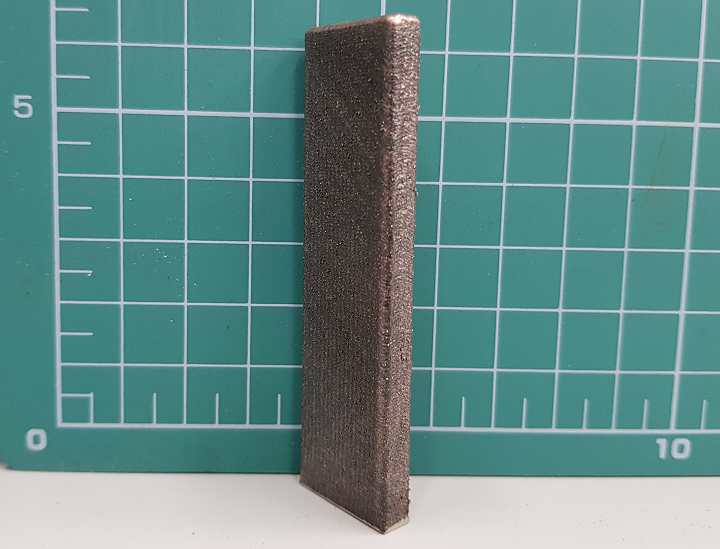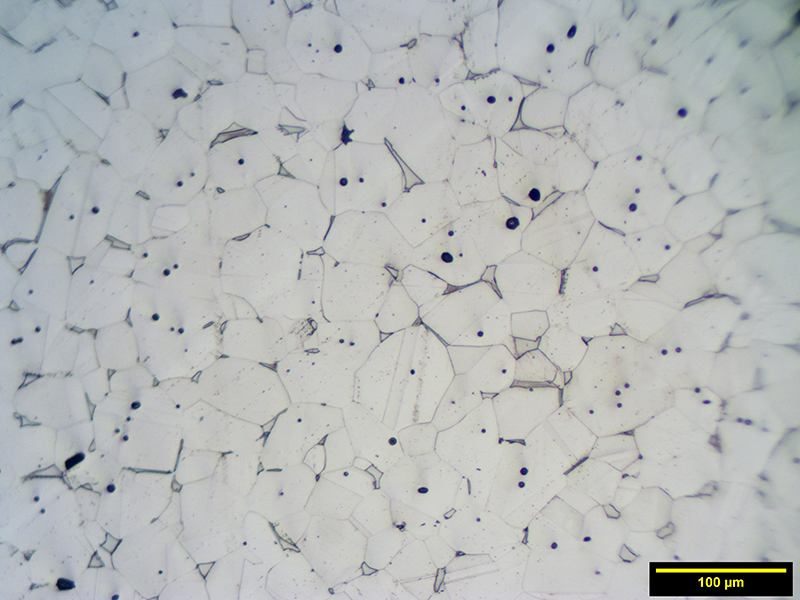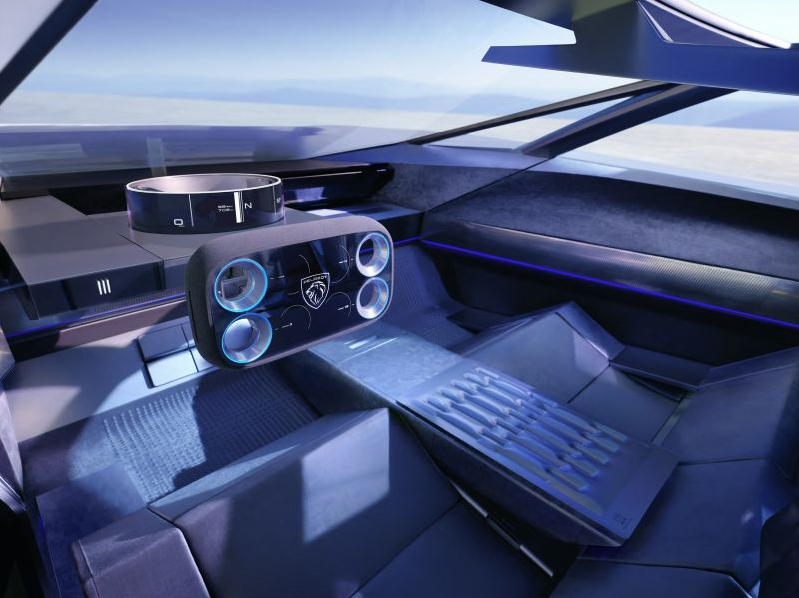We’re starting with research in today’s 3D Printing News Briefs, as a research team based out of China developed a new approach for 3D printing hydrogel-based electronics. Also, researchers in Russia are 3D printing samples of bronze-steel alloys, which could show great promise for aircraft and rocket engines. 3DEO launched a new metal for high-volume 3D printing. Finally, a new PEUGEOT concept car features 3D printing on textiles, thanks to Stratasys technology.
3D Printing Hydrogel-Based Electronics
 3D printed all-hydrogel ECG electrode. Credit: Hui et al.
3D printed all-hydrogel ECG electrode. Credit: Hui et al.3D polymer networks called hydrogels retain large amounts of liquids, rather than dissolving in water, which makes them excellent material platforms for environmental and biomedical applications. Many electronic devices based on soft hydrogels, like sensors, artificial tissue, and drug delivery devices, have been created, but high production costs hinder widespread use. But a team of researchers, led by Dr. Nanjia Zhou at Westlake University in China, developed a new approach to 3D printing soft hydrogel electronics that could help keep costs down for hydrogel-based devices. The goal of their study was to come up with a more efficient way to print complex, biomedically useful hydrogel-based electronics, using a stretchable silver-hydrogel ink and a hydrogel-based supporting matrix. By combining granular gel particles with a conductive filler (silver flakes), they could form a segregated structure in the highly conductive 3D printing ink. The researchers tested their method by freeform printing several hydrogel-based electronics, including biological electrodes, inductors, and strain sensors, which performed very well and could pave the way for fabrication of more sophisticated hydrogel-based electronics, including biomedical devices and environmental monitors.
“The embedded 3D printing method we developed involves the freeform printing of a conductive hydrogel ink into a hydrogel supporting matrix, and the subsequent curing of the two parts to form a soft and stretchable electronic device. These are based on the suitable rheological properties of the matrix and the ink, as well as the orthogonal curing mechanism of alginate and polyacrylamide, which are the main components of the hydrogel,” explained Dr. Yue Hui, one of the researchers who carried out the study.
“As we demonstrate in our paper, our method can be used to make various hydrogel electronic devices with different functionalities. Particularly, we can directly print exposed electrodes that can communicate with the outside world, and we can incorporate components such as LEDs and chips into the circuitry via printing. Our findings imply that with delicate design we can really make functional hydrogel electronic devices.”
Novel Bronze-Steel Alloys Could 3D Print Engine Combustion Chambers
 A vertical bar made of a quasi-homogeneous bronze-steel alloy manufactured by the researchers. Credit: Konstantin Makarenko/Skoltech.
A vertical bar made of a quasi-homogeneous bronze-steel alloy manufactured by the researchers. Credit: Konstantin Makarenko/Skoltech.A team of researchers from Russia’s Skolkovo Institute of Science and Technology (Skoltech) decided to blend the distinct properties of two metals in an “unlikely union.” The researchers 3D printed samples of a novel bronze-steel alloy that’s previously unknown to materials science, and found that the resulting mechanical characteristics could be beneficial in fabricating combustion chambers for aircraft and rocket engines, due to the capacity of bronze to conduct heat away from the chamber and steel’s ability to withstand extreme temperatures. In their study, the team used direct laser deposition, which melts and fuses powdered ingredients with a laser beam at each successive point in the metal part during its creation, and this was reportedly the first-ever synthesis of a bronze-steel alloy using this technology. The team combined the metals in two different ways: quasi-homogeneous alloys, which has the materials mostly evenly intermixed, and sandwich structures, which consists of alternating 0.25 mm thick layers of the metals. By printing vertical bars from the bottom up and examining their microstructure, shape, and chemical composition, they determined that the two materials fused well, with no defects forming.
“Now that we have confirmed that steel and bronze can be combined in an alloy and are compatible with 3D printing via direct laser deposition, and we know the mechanical characteristics of the new material, we can explore its possible applications,” said Konstantin Makarenko, a fourth-year Ph.D. student at Skoltech Materials and first author of the study.
“Looking forward, I would like to manufacture and test a steel-bronze combustion chamber at Skoltech, but beyond that, other items are possible and other metal combinations could be used. The next step would be to create turbine blades made of a strengthened superalloy with cooling channels made of bronze. It’s all about combining the benefits of two distinct materials in one seamless product without any welding or other junctures.”
3DEO Introduces 316L Stainless Steel for High-Volume 3D Printing
Design, engineering, and manufacturing firm 3DEO, which is the world’s highest volume metal 3D printing service, has launched 316L stainless steel for 3D printing. The non-magnetic, fully austenitic material exceeds MIM standards, and is weldable, very corrosion resistant, and has excellent ductility and mechanical performance. In addition, it performs very well at both room and moderately elevated temperatures, and all of these features make it a good choice for applications in industries such as marine, food processing, industrial, and medical. 316L joins 3DEO’s existing 17-4PH stainless steel, and marks its latest materials expansion, though the company is currently testing several other new materials, including pure copper, that are set to be released later this year.
“Our talented team of material scientists have been hard at work testing and validating 316L on our technology, and we are thrilled with the results. With material properties that meet the MPIF Standard 35 standards, introducing 316L to our customers will allow them to take advantage of the benefits, time-savings and cost-efficiencies of 3D printing using a biocompatible, corrosion-resistant material like 316L for their high-demand applications,” said Matt Petros, the CEO and Co-Founder of 3DEO.
“As our customers aim to innovate and gain a competitive edge with their next generation and new-to-market products, we have seen strong demand for 316L. Introducing this to our customers will continue to enable engineers to develop premium products for a wide variety of demanding applications in partnership with 3DEO.”
3D Printing on Textiles in PEUGEOT Concept Car
The new PEUGEOT INCEPTION CONCEPT car is the Stellantis Group‘s vision for the future of electric vehicles, and also features the use of 3D printing, thanks to a collaboration between Peugeot and Stratasys. The car’s name itself means “the beginning,” and adoption of 3D printing continues to grow at Stellantis, formed in 2021 on the basis of a merger between Italian-American conglomerate Fiat Chrysler Automobiles and the French PSA Group. Peugeot is actually a brand of PSA, an early Divergent investor that has used AM in the past to fabricate custom parts and accessories for the vehicle line. The floor and seats of the new PEUGEOT INCEPTION CONCEPT are covered in a special velvet, which was made of 100% recycled polyester. The velvet extends to the floor, and was then printed with 3D patterns, using Stratasys’ 3DFashion technology, to act as a car floor mat. 3D printing was also used to make final parts, like the Hypersquare control system, more comfortable by improving the ergonomics. The Hypersquare’s rim is also 3D printed. While Stellantis hasn’t yet addressed the use of 3D printing for serial part production in the PEUGEOT INCEPTION CONCEPT, but higher batch applications could be considered in the future if the value proposition fits the overall cost scheme. This could be an indication that most car manufacturers know that 3D printing could be the future.
“PEUGEOT is committed to the electrification of its range. In 2023, 100% of the vehicles in the range will be electrified and in the next two years, five new 100% electric models will be launched. Our ambition is simple: to make PEUGEOT the leading electric brand in Europe by 2030,” said Linda Jackson, CEO of the PEUGEOT brand. “This objective and ambitious vision pave the way for a radical transformation for the Brand. It is embodied today in the PEUGEOT INCEPTION CONCEPT which marks the beginning of a new era! PEUGEOT promises that the world is a better place with Allure, the PEUGEOT INCEPTION CONCEPT embodies the meaning of this promise from today onwards.”
Subscribe to Our Email Newsletter
Stay up-to-date on all the latest news from the 3D printing industry and receive information and offers from third party vendors.
Print Services
Upload your 3D Models and get them printed quickly and efficiently.
You May Also Like
Reinventing Reindustrialization: Why NAVWAR Project Manager Spencer Koroly Invented a Made-in-America 3D Printer
It has become virtually impossible to regularly follow additive manufacturing (AM) industry news and not stumble across the term “defense industrial base” (DIB), a concept encompassing all the many diverse...
Inside The Barnes Global Advisors’ Vision for a Stronger AM Ecosystem
As additive manufacturing (AM) continues to revolutionize the industrial landscape, Pittsburgh-based consultancy The Barnes Global Advisors (TBGA) is helping shape what that future looks like. As the largest independent AM...
Ruggedized: How USMC Innovation Officer Matt Pine Navigates 3D Printing in the Military
Disclaimer: Matt Pine’s views are not the views of the Department of Defense nor the U.S. Marine Corps Throughout this decade thus far, the military’s adoption of additive manufacturing (AM)...
U.S. Congress Calls Out 3D Printing in Proposal for Commercial Reserve Manufacturing Network
Last week, the U.S. House of Representatives’ Appropriations Committee moved the FY 2026 defense bill forward to the House floor. Included in the legislation is a $131 million proposal for...



































